The extension of the thumb is sometimes referred to as “the hitchhike sign” (Figure 1). The hitchhike sign is used to identify two different conditions: radial nerve or posterior interosseous nerve palsy and diastrophic dwarfism.
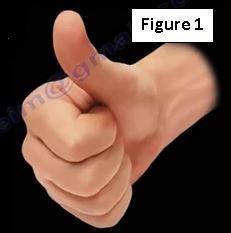
An example of the radial nerve palsy is a fracture of the distal third of the humerus (Figure 2). An example of the posterior interosseous nerve palsy is an injury or surgery around the elbow such as a monteggia fracture. In both conditions, the fracture or surgery, it is possible to injure the radial or posterior interosseous nerve, which may result in paralysis of the wrist and finger extensors. The patient should be examined before and after surgery and also before and after any closed reduction of fractures around the elbow.
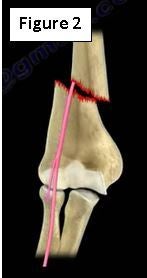
Here is an example of how you examine the patient for posterior interosseous nerve injury. The patient will be able to perform wrist extension, but no finger extension (Figure 3).
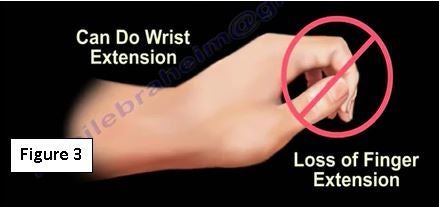
The radial nerve innervates the wrist, finger, and thumb extensors (Figure 4). The posterior interosseous nerve will innervate the finger and thumb extensors only.
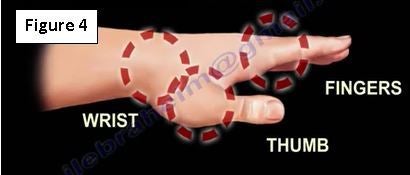
Injury at a higher level is most likely associated with the radial nerve. If the injury is at a lower level, usually occurring around the elbow, it will be associated with the posterior interosseous nerve (Figure 5).
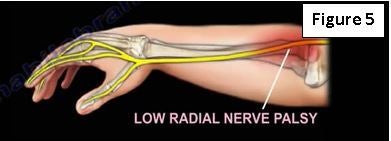
The first thing I check for is if the patient can do the hitchhike sign, if they can do this then the radial nerve and the posterior interosseous nerve functions are intact. If the patient cannot perform the hitchhike sign, then the posterior interosseous nerve may be affected (Figure 6).
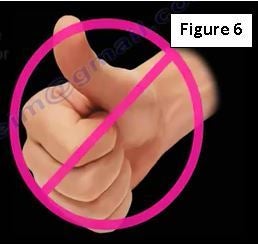
The physician will also ask the patient to extend their wrist. If the patient can extend the wrist, then the radial nerve is unaffected up to the level of the posterior interosseous nerve, meaning the PIN is the one that is involved (Figure 7).
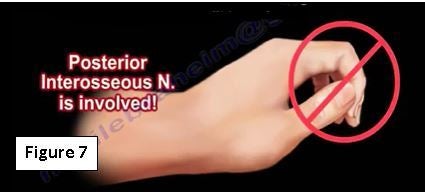
Remember, it is difficult to distinguish whether or not the patient has a true wrist drop due to the splinting, immobilization and examination (Figure 8 ).
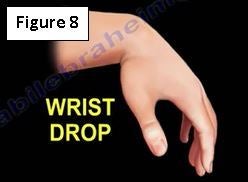
The patient may extend the fingers by the intrinsic muscles which predominantly involves the ulnar nerve with some median nerve contribution. If the physician wants to examine the fingers properly, have the patient extend their wrist then ask the patient to extend the fingers. This is more complicated than asking the patient to perform the hitchhike sign.
Diastrophic Dwarfism or Diastrophic Dysplasia (DTD)
Diastrophic dwarfism is an enzymatic deficiency or defect. If it is an enzymatic deficiency, then the condition is typically autosomal recessive such as vitamin D dependent rickets or Gaucher’s disease. Affected individuals have short stature with very short arms and legs (Figure 9). However, in this case, it is a sulfate transport protein defect. These patients may also have hitchhiker thumb, cauliflower ear, and club foot.
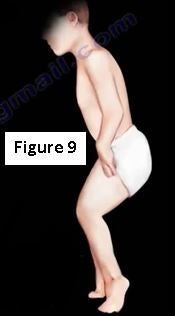
For more information, visit my YouTube Channel:
